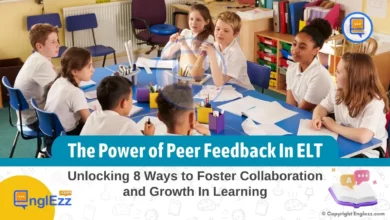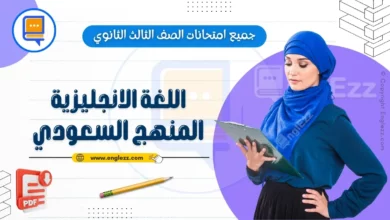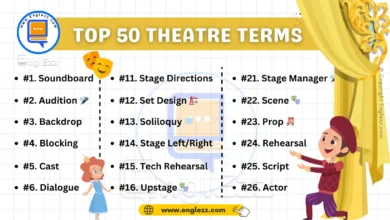In the ever-evolving landscape of English Language Teaching (ELT), one fundamental aspect stands out as a cornerstone for language proficiency: Student Talking Time (TTS). The symphony of voices in a classroom, comprising learners actively engaged in speaking practice, is not merely a cacophony but the melodic precursor to enhanced language fluency.
By amplifying TTS, educators unlock a realm where student voices resonate with confidence and clarity, shaping not only linguistic prowess but also fostering self-assurance in communication skills. As we embark on this journey towards enriched language learning experiences, it becomes apparent that the magic lies in providing ample opportunities for learners to immerse themselves in the art of expression.
Amplifying TTS for Enhanced English Language Learning
Picture a classroom where verbal exchanges flow freely, where each utterance becomes a brushstroke painting the canvas of linguistic growth. Herein lies the essence of empowering student voices through TTS—an endeavor that transcends mere dialogue into transformative language acquisition. Encouraging students to partake in active communication propels them toward linguistic mastery while instilling the invaluable gift of articulating thoughts with eloquence and precision.

The importance of creating an interactive space brimming with opportunities for vocal exploration cannot be overstated; it stands as the bedrock upon which confident communicators are nurtured and flourishing language skills take root. Join us on this exploration as we delve deeper into unlocking language fluency by championing student voices in ELT, illuminating pathways to linguistic empowerment through dynamic engagement and proactive participation.
Empowering Student Voices Through TTS
Empowering students to actively participate in their English language learning journey can significantly impact their fluency and confidence levels. By prioritizing Student Talking Time (TTS) in classrooms, educators create a platform for students to practice speaking and listening skills authentically. For instance, organizing group discussions where every student has the opportunity to express their opinions fosters a supportive environment where learners feel encouraged to communicate in English without fear of judgment. This approach not only enhances language proficiency but also boosts students’ self-assurance in using the language effectively.
Employing strategies that emphasize active communication is key to maximizing students’ speaking skills development. Role plays, debates, and presentations are effective tools that engage learners in meaningful interactions while honing their language abilities. Through role plays, students can simulate real-life scenarios, such as ordering food at a restaurant or negotiating a business deal, which helps them apply language learned in class to practical situations. Similarly, debates challenge students to articulate arguments cohesively while responding thoughtfully to diverse perspectives. Such activities not only enhance fluency but also promote critical thinking and persuasive communication skills.
Creating a dynamic learning environment centered around TTS not only improves speaking proficiency but also enhances overall language acquisition. When students are actively engaged in conversations, whether through discussing current events or sharing personal experiences, they become more invested in the learning process. Interactive activities like storytelling circles or collaborative projects encourage peer-to-peer interaction and collaboration, allowing learners to practice English naturally in varied contexts. By fostering a space where student voices are valued and heard, educators pave the way for comprehensive language development that extends beyond grammar rules and vocabulary memorization.
Interactive Learning Activities for Increased Engagement
To truly empower student voices in English Language Teaching (ELT), the incorporation of interactive learning activities is paramount. Imagine a classroom buzzing with energy as students engage in role plays where they step into different characters and scenarios to practice their language skills authentically. These role plays not only enhance communication abilities but also foster creativity and confidence among learners. For instance, students could take on roles from famous English literature or enact real-life scenarios like ordering food at a restaurant, thereby immersing themselves in practical language application.
Encourage students to incorporate TTS activities into their daily routines. Whether it’s discussing current events with a study buddy or utilizing language exchange apps for virtual conversations, consistent practice is key to improving language fluency. By regularly engaging in speaking exercises, students can build confidence and refine their communication skills over time.
Multimedia tools offer a rich tapestry of resources that transform traditional learning environments into dynamic, engaging spaces. Whether it’s incorporating videos, podcasts, or interactive online platforms, multimedia tools cater to diverse learning styles and preferences. Visual aids can clarify complex concepts while fun educational games can make language practice enjoyable and effective. By infusing technology seamlessly into lessons, educators create an immersive experience that captivates students’ attention and motivates them to participate actively in the learning process.
Group discussions and pair work are gems in language classrooms – they not only enhance collaborative skills but also provide ample opportunities for every learner to contribute meaningfully to conversations. Picture students engaged in lively debates about current global issues or working together to solve language-based challenges collaboratively. Such activities encourage peer-to-peer interaction, boosting social skills alongside linguistic development. When students collaborate on tasks that require them to communicate effectively with one another, they build essential teamwork skills while honing their English proficiency in a supportive environment.
Utilizing Technology for Language Fluency Enhancement
In the realm of English language teaching, leveraging technology can immensely benefit students in their quest for language fluency. Exploring digital platforms that facilitate virtual conversations not only offers learners a chance to practice in real-time but also hones their ability to communicate effectively in diverse settings. For instance, utilizing platforms like Zoom or Skype allows students to engage with native speakers from around the world, providing authentic language practice opportunities that traditional classroom settings may not always offer.
Online language learning apps have revolutionized how educators supplement traditional teaching methods. These apps cater to different learning styles and paces, offering interactive exercises, vocabulary drills, and pronunciation tips tailored to individual needs. A notable example is Duolingo, which gamifies the language learning process and keeps students motivated through its engaging interface and bite-sized lessons. By incorporating such apps into their curriculum, teachers can encourage self-paced learning while providing additional resources for students to reinforce their language skills outside of class.
Moreover, integrating voice recognition software into language learning programs presents a valuable tool for enhancing pronunciation accuracy and listening skills. Platforms like Google’s speech-to-text feature or Pronunciation Power’s interactive modules assist learners in fine-tuning their accent and intonation by providing instant feedback on pronunciation errors.
This real-time correction mechanism not only boosts students’ confidence in speaking but also nurtures an ear for nuances in the English language, ultimately leading to improved communication proficiency. Through these technological advancements, educators can create immersive and dynamic learning experiences that empower students towards achieving greater fluency in English.
Promoting Cultural Understanding Through Speaking Practice
In the realm of English Language Teaching, embracing cultural diversity through speaking practice is a powerful tool to broaden students’ global perspectives. By engaging learners in discussions on cultural topics, educators facilitate a deeper understanding of different traditions, beliefs, and values. For example, organizing conversation circles where students share about their own cultural heritage not only fosters language skills but also promotes respect for diverse backgrounds. Such activities encourage empathy and open-mindedness, laying the groundwork for inclusive interactions within multicultural learning environments.
Encouraging debates on pressing global issues serves as a dual-purpose strategy by stimulating critical thinking skills while honing language proficiency. Engaging students in discourse on topics like climate change, human rights, or global politics not only challenges them to articulate complex ideas in English but also instills the importance of informed opinions and respectful dialogue. By providing a platform for students to express their views and engage in constructive arguments, educators empower learners to become eloquent communicators with the ability to navigate challenging conversations effectively.
Incorporating diverse speaking tasks into the curriculum creates space for students to learn from each other’s experiences and linguistic variations. For instance, designing group projects that involve researching different cultures and presenting findings promotes cross-cultural communication skills. By working collaboratively on such assignments, learners not only enhance their language fluency but also cultivate empathy towards peers from diverse backgrounds. Through these interactive speaking tasks, students develop a heightened awareness of cultural nuances and enrich their communication abilities through mutual understanding and shared insights.
Assessment Strategies to Monitor Progress and Proficiency
In the realm of English Language Teaching (ELT), assessment strategies play a pivotal role in capturing student progress and enhancing language proficiency. Implementing regular speaking assessments acts as a compass that guides educators in tracking individual language development journeys. By offering students opportunities to showcase their speaking skills in various contexts, teachers can identify areas for improvement and tailor instruction to meet specific needs. For instance, hosting weekly presentations or conducting spontaneous speech exercises during class can provide valuable insights into each student’s evolving fluency and communication prowess.
Constructive feedback serves as a cornerstone for continuous improvement in language learning. When students receive detailed comments on their speaking performances, they gain clarity on their strengths and areas requiring further refinement. By nurturing a culture where feedback is viewed as a tool for growth rather than mere critique, educators empower learners to strive for excellence while cultivating resilience and self-assessment skills. Encouraging peer-to-peer feedback sessions can also foster a supportive learning environment where students actively engage in dialogue about their language journey, fostering collaboration and mutual support among peers.
Create a supportive environment where errors are viewed as stepping stones towards improvement rather than sources of embarrassment. Encourage students to take risks in expressing themselves without the fear of making mistakes. By normalizing errors and providing constructive feedback, educators can help learners recognize areas for growth and encourage continuous development.
The utilization of rubrics tailored to measure key aspects like fluency, coherence, and vocabulary enrichment provides educators with structured evaluation criteria that ensure comprehensive assessment of students’ speaking skills. Rubrics not only offer clear benchmarks for performance expectations but also guide students on the specific components essential for effective verbal communication.
By breaking down complex language competencies into measurable components within rubrics, teachers can provide targeted feedback that aids both immediate skill improvement and long-term linguistic development. For example, a rubric assessing fluency may focus on factors such as speed of speech, lack of hesitations, and naturalness of intonation to paint a holistic picture of a student’s oral proficiency level.
In essence, assessment strategies tailored to monitor student progress not only serve as diagnostic tools but also pave the way for personalized educational approaches that cater to diverse linguistic needs. With regular assessments, insightful feedback mechanisms, and well-structured rubrics in place, educators can navigate the intricate landscape of language evaluation with precision and compassion, fostering an environment where every student’s voice is heard and nurtured towards greater fluency and confidence in English communication.

Embracing linguistic diversity in English Language Teaching (ELT) not only enriches the educational landscape but also empowers students to embrace their unique voices and perspectives. By providing a platform where all learners, regardless of their linguistic background, can actively participate, educators foster inclusivity and equal opportunities for language practice. For instance, organizing group discussions that showcase various accents and dialects cultivates an environment where students feel heard and valued, leading to increased confidence in expressing themselves linguistically.
In multilingual classrooms, celebrating diverse linguistic backgrounds becomes a cornerstone of promoting cultural understanding and empathy among students. Educators can leverage this diversity by incorporating activities that highlight different languages and traditions, encouraging mutual respect and appreciation for varied ways of communication. By embracing these inclusive approaches to student voice empowerment, ELT environments become nurturing spaces where differences are not only accepted but celebrated for the richness they bring to language learning experiences.
Offer a variety of speaking tasks that cater to different learning styles and interests. From fun storytelling sessions incorporating elaborate narratives to structured debates on thought-provoking topics, providing diverse speaking opportunities keeps learners engaged and motivated. By tailoring activities to suit individual preferences, educators can foster a love for expressing ideas in English while honing linguistic skills effectively.
Moreover, encouraging respect for various accents and linguistic styles is pivotal in creating a welcoming atmosphere conducive to improved fluency. When students feel validated in their speech patterns and cultural expressions, they are more likely to engage actively in speaking practice without fear of judgment or prejudice.
Celebrating language variations through poetry readings or storytelling sessions allows learners to recognize the beauty in diversity while honing their oral communication skills. Ultimately, by embracing diverse accents and linguistic styles within the ELT framework, educators instill a sense of belonging and acceptance that propels students toward greater fluency and confidence in English proficiency.
Empowering Voices in English Language Learning
In conclusion, empowering student voices through increased Student Talking Time (TTS) has shown to be a transformative approach in enhancing English language learning. By prioritizing opportunities for active speaking practice, educators can nurture language fluency, confidence, and cultural understanding among learners. Strategies that promote engagement, interactive learning activities, technology integration, and inclusive practices all play pivotal roles in creating dynamic language learning environments where students thrive.
Through the amplification of TTS, educators can unlock the true potential of their students, providing them with the tools and confidence needed to navigate a multilingual world. By embracing diverse linguistic backgrounds, encouraging participation from all students, and utilizing innovative teaching methods, we pave the way for inclusive educational experiences that foster not only language proficiency but also empathy and global citizenship.
Continued dedication to enhancing student voices in English Language Teaching (ELT) will undoubtedly lead to empowered learners who are ready to engage with the world around them confidently and compassionately.
Wrapping Up
In brief, recognizing the pivotal role of Student Talking Time (TTS) in English Language Teaching (ELT) is essential for enhancing language proficiency and confidence among learners. By fostering opportunities that empower student voices through active participation, educators can create an environment conducive to meaningful language practice and fluency development. Embracing diversity within language classrooms not only enriches the learning experience but also promotes inclusivity by valuing students’ unique linguistic backgrounds and encouraging respect for diverse accents and styles of communication.
By prioritizing TTS in ELT settings, educators can witness remarkable improvements in students’ speaking skills, critical thinking abilities, and cross-cultural communication competencies. Through interactive learning activities, such as role plays, debates, and multimedia-enhanced sessions, learners engage actively in language practice while delving into cultural discussions that broaden their perspectives. Collaborative tasks like group discussions and pair work facilitate peer interaction and support students in navigating linguistic challenges together.
Monitoring progress through effective assessment strategies tailored to measure fluency, coherence, vocabulary enrichment, and pronunciation accuracy is crucial for guiding learners towards continuous improvement. Constructive feedback provided after speaking activities serves as a catalyst for growth and encourages students to refine their communication skills progressively. By leveraging technology tools like voice recognition software and online language learning apps to supplement traditional teaching methods, educators can enhance their pedagogical approaches and offer students innovative avenues for honing their language competencies effectively.
By implementing these tips and strategies into English language teaching practices, educators can empower student voices in ELT and contribute to enhanced language fluency among learners from diverse backgrounds. Through consistent practice, embracing mistakes as part of the learning process, and diversifying speaking practice activities, both educators and students can collaboratively work towards achieving higher levels of proficiency in spoken English.
Frequently Asked Questions About Empowering Student Voices Through TTS:
1. How does increasing Student Talking Time benefit English language learners?
– Increasing TTS allows learners to actively practice speaking skills which leads to improved fluency and confidence.
2. What are some effective strategies for promoting active communication in ELT?
– Engaging activities like debates and role plays encourage participation while boosting overall language proficiency.
3. How can technology be utilized to enhance language fluency among students?
– Digital tools such as voice recognition software aid in improving pronunciation accuracy and listening skills.
4. Why is it important to promote cultural understanding through speaking practice?
– Discussing cultural topics fosters empathy, broadens perspectives, and encourages cross-cultural communication skills.
5. What assessment strategies can educators use to measure progress in student speaking skills?
– Regular speaking assessments with tailored rubrics help track individual development and provide constructive feedback for improvement.








